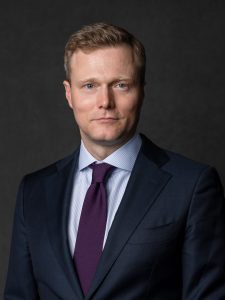The downsides of downsizing: Why the United States needs four hundred ICBMs
Reducing the size of the land-based leg of the triad would weaken US national security
The United States is at a nuclear modernization crossroads. The United States currently has plans to modernize all three legs of its nuclear triad, including its force of four hundred deployed intercontinental ballistic missiles (ICBMs). Some critics of this upgrade allege that nuclear deterrence can be equally robust, less destabilizing, and cheaper with an ICBM force of only three hundred missiles. The Scowcroft Center’s Matthew Kroenig, Mark J. Massa, and Christian Trotti recommend that the United States maintain the current modernization plan—an effort backed by years of bipartisan consensus. ICBMs serve four critical goals of US nuclear strategy: deterrence of nuclear and non-nuclear attack, assurance of allies and partners, achievement of US objectives if deterrence fails, and the capacity to hedge against an uncertain future. Arguments against the current Ground Based Strategic Deterrent (GBSD) plan fail to grapple with the strategic necessity and economic efficiency of the land leg.
The possession of four hundred ICBMs is preferable to three hundred, enhancing all four goals of US nuclear posture: deterrence, assurance of allies, damage limitation, and hedging.
A larger arsenal of ICBMs is critical for deterring a nuclear attack. An attacker faced with fewer US ICBM silos would have an easier time disarming the United States. Four hundred ICBMs also play a critical role for assurance. Removing a large quantity of US nuclear weapons could be seen as a sign that the United States is pulling back from its alliance commitments, a risky proposition at a time when there are renewed debates in allied capitals about going nuclear. ICBMs also serve a critical purpose if deterrence fails. In a nuclear war, ICBMs serve as critical “warhead sinks” to absorb enemy nuclear weapons. Eliminating one hundred ICBMs would free up additional enemy weapons to target US cities, increasing damage to the United States and its allies. Finally, ICBMs allow the United States to hedge against an uncertain future. Russia has worked to develop exotic nuclear weapons that are not limited by arms control, while the US government projects a doubling of China’s nuclear forces over the next decade. Deploying four hundred ICBMs gives the United States the ability to upload additional nuclear warheads if tensions rise.
Budgetary criticisms of the land leg also fall flat—nuclear deterrence only accounts for 6 percent of the Department of Defense’s budget, a low sum for what many DoD officials have labeled the Department’s top priority. As Defense Secretary Mattis put it, “America can afford survival.” Additionally, ICBMs are the least expensive leg of the triad. Cost savings from cutting missiles are not linear. Rather, much of the cost is incurred through designing and testing the first new missile, not serial production costs. Finally, eliminating ICBMs would result in notable short-term costs from removing the missiles, transporting and storing the warheads, demolishing structures, and environmental remediation.
Key recommendations
The report advances a number of conclusions and recommendations for the future of the land-based leg of the triad:
- Continue with planned modernization through the GBSD program, enabling the eventual retirement of the Minutemen III.
- At minimum, maintain four hundred ICBMs, resisting calls to downsize to three hundred ICBMs.
- Consider a small increase in the ICBM force to fill existing silos within New START limits.
Reducing the size of the US ICBM force will not save significant amounts of money or strengthen strategic stability.
About the authors
Subscribe
Sign up for updates from Forward Defense to hear the latest on the trends, technologies, and military challenges shaping tomorrow.

Forward Defense, housed within the Scowcroft Center for Strategy and Security, generates ideas and connects stakeholders in the defense ecosystem to promote an enduring military advantage for the United States, its allies, and partners. Our work identifies the defense strategies, capabilities, and resources the United States needs to deter and, if necessary, prevail in future conflict.


